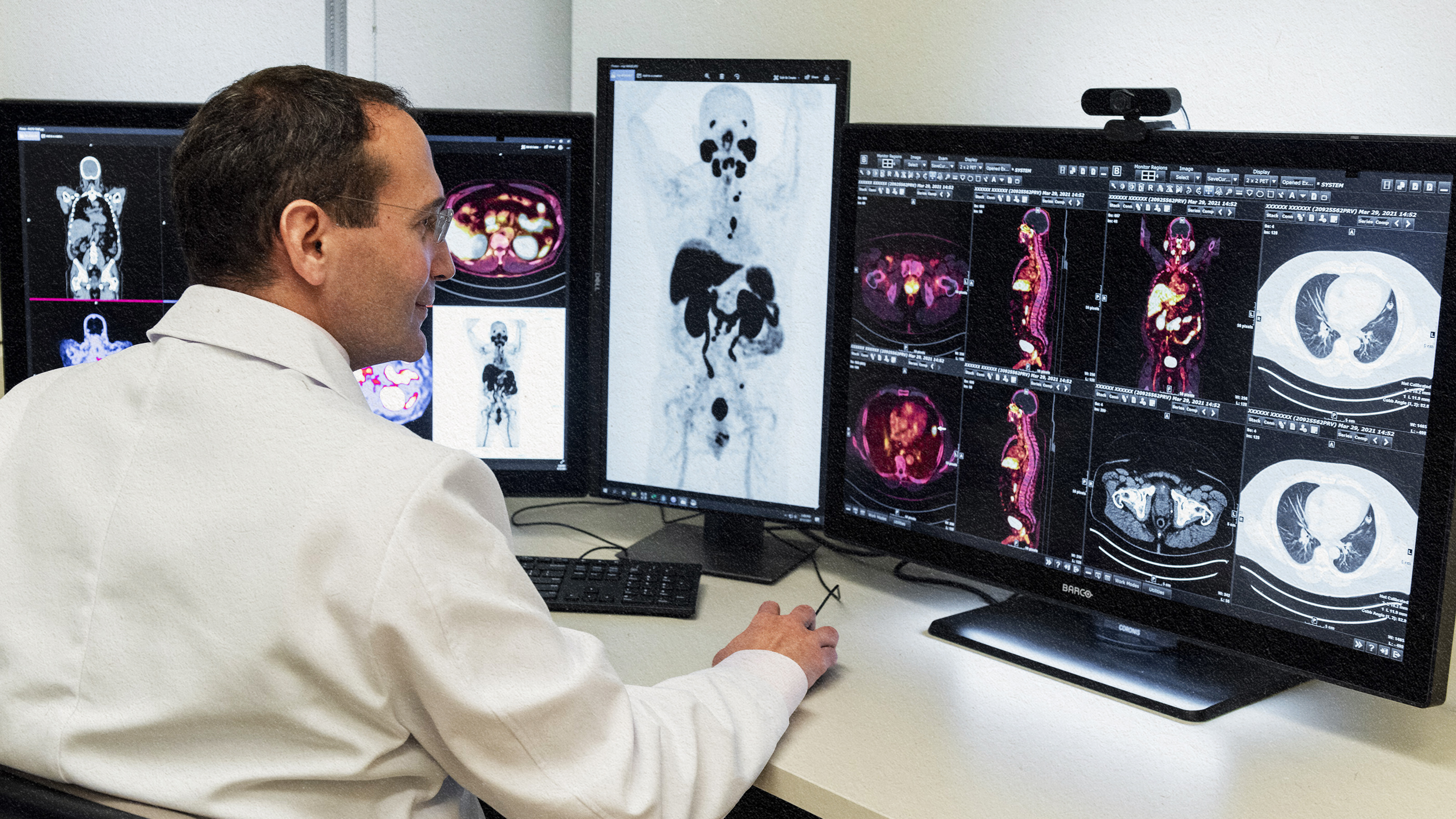How pocket-sized particle accelerators could treat cancer

- Particle accelerators are devices that use a combination of electric and magnetic fields to accelerate charged particles like protons or electrons to very high velocities and then form beams of these particles.
- They range in size from a minivan to the gargantuan Large Hadron Collider, which is 16.5 mi (26.6 km) in circumference.
- Nano-photonic particle accelerators are smaller than a dime.
Back in 1966, Richard Fleischer directed a movie called Fantastic Voyage. The premise was that scientists were able to shrink a submarine-like craft (complete with humans inside) and inject the craft into a human body. The craft then was piloted to the location of a blood clot in the brain of a patient, and the clot was removed using a laser. Although the premise of the movie is obviously fictitious, a recent development described in the journal Nature involving miniature particle accelerator technology could make the movie a smidge closer to reality.
Pocket-sized particle accelerator
Particle accelerators are devices that use a combination of electric and magnetic fields to accelerate charged particles like protons or electrons to very high velocities and then form beams of these particles. Those beams can have many purposes, including conducting fundamental research into the laws of nature or recreating the conditions of the Universe just fractions of a second after it began. However, a much more pragmatic usage of these beams is to treat cancer patients using radiation.
Particle accelerators are generally large pieces of equipment, ranging from the size of a minivan in many hospital settings to the Large Hadron Collider, which is 16.5 miles (26.6 km) in circumference. This new accelerator, however, is much smaller — smaller than a dime.
Researchers at the Friedrich-Alexander University of Erlangen-Nuremberg (FAU) in Germany made what is called a nano-photonic particle accelerator. It uses laser pulses to accelerate electrons from an injection energy of 28,000 electron-volts to an energy of just over 40,000 electron-volts, an increase of 43%. This is the energy of extremely potent X-rays. Furthermore, the accelerating force is comparable to traditional accelerators, with only the short accelerator length restricting the total energy increase.
Tiny, but a mighty punch
The “business end” of the accelerator is a tube that is only 0.02 inches (0.5 mm) long. The inner diameter of the tube is merely 225 nanometers wide. To give a sense of just how small that is, a million nanometers is the same as a millimeter, and the diameter of a human hair ranges between 80,000 and 100,000 nanometers. When in operation, a tiny laser located on an electronic chip fires at about one thousand individual “pillars,” which look a bit like a tiny forest. The interaction of the laser and the pillars is responsible for the acceleration.
The total energy is small compared to much larger accelerators, but researchers think that perhaps by using a series of these nano-photonic devices, they could reach higher energies. Currently, the number of electrons accelerated in these first prototypes is very low, thus the beam does not generate enough radiation to have commercial value.
Treating cancer
While the technology is not yet ready, researchers imagine that it could one day revolutionize radiation therapy. Attaching the accelerator to a miniature submarine in the manner depicted in Fantastic Voyage is unlikely, but the accelerator could be attached to what is called an endoscope, which is used to probe inside the human body. Oncologists could then put the output of the accelerator immediately adjacent to a tumor to treat the cancer.
This would be advantageous for a couple of reasons. Today, radiation used in treatment is usually strong enough that it also irradiates healthy tissue beyond the tumor. In theory, the new technology could have an energy output that is tunable, so that it minimizes damage to nearby tissues, which also would reduce any side effects experienced by the patient. Furthermore, current treatments utilize radiation that is created outside the body, which is then aimed at the tumor. Because radiation is absorbed as it travels through human tissue, the tissues nearest the skin get the most radiation, while the deeper tumor gets less — and it can result in what appears to be a sunburn. The tiny particle accelerators could avoid this.
Miniaturization of medical instrumentation is becoming a reality. The invention of micro- and nano-electronics has the potential to treat patients in ways that were once unimaginable.





